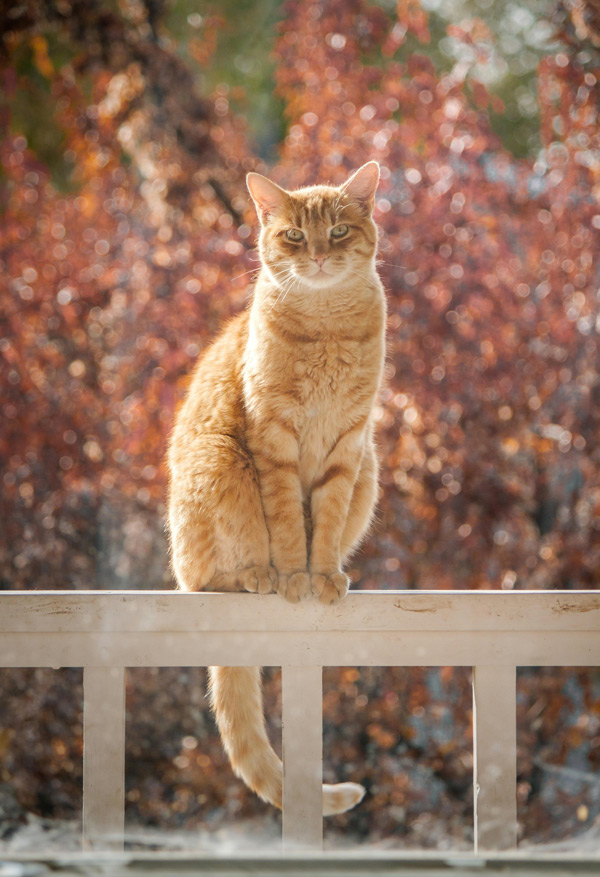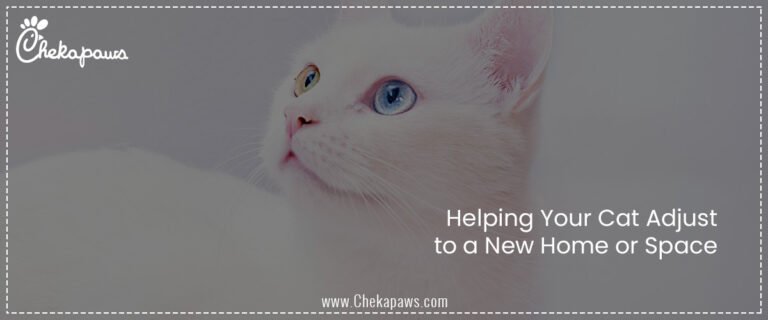As a pet parent, I am aware that cats are tall animals in addition to being comfortable. Cats mount cliffs, perch on branches, and climb trees in the wild. In order to survey their domain from above, they frequently jump onto furniture, shelves, or countertops indoors. Why? Because, according to feline psychology, vertical space equates to safety, control, and stimulation.
A vertical playground with cat wall shelves is the ideal way to increase your cat’s play area if you live in an apartment or wish to add more space to your cat’s play area. These constructions serve as chic, contemporary décor in addition to improving your cat’s surroundings and saving vital floor space.
We’ll go over how to design, construct, and personalize do-it-yourself cat wall shelves in this guide—no contractor needed. Learn everything you need to create a customized cat climbing haven on your walls, from comprehending feline behavior to selecting materials and incorporating artistic flare.
Table of Contents

Why Vertical Space Matters for Cats
The Natural Climber
Cats are naturally drawn to elevated areas. Their height in the wild enables them to
- Avoid predators
- Observe the prey.
- Leave it alone.
Even domestic cats exhibit this behavior. Vertical territory is particularly advantageous for multi-cat households since it avoids resource-based disputes and encourages harmonious cohabitation.
Behavioral Benefits of Climbing
The following are some behavioral advantages of climbing vertical spaces
- Anxiety and boredom
- Destructive conduct, such as chewing cords or clawing furniture
- In households with many cats, aggression
Additionally, they support
- Weight control and exercise
- Increasing the self-assurance of timid cats
- A secure haven away from kids or dogs
Environmental Enrichment
Cats need a sophisticated habitat in addition to toys. Including vertical features like perches, walkways, and kitty shelves keeps them active and mentally engaged. This is particularly crucial for indoor cats that are unable to scale fences or trees.
Planning Your DIY Cat Wall Playground
Assessing Your Wall Area
- First, choose a wall or group of walls that:
- Take in some natural light, but avoid the sun all day.
- Stay away from breakables.
- Provide ample height for several tiers.
- are not near busy areas (unless your cat enjoys watching).
- Living rooms, home offices, hallways, and behind couches are all good places to put it.
Understanding the Preferences of Your Cat
- Pay attention to your cat’s personality:
- Timid cats like included, secluded areas.
- Cats with lots of energy like ladders, open shelves, and running courses.
- Lower platforms and simple climbing routes may be necessary for older cats.
- Placement and style might be influenced by where your cat currently hides or perches.
Safety First
Arrange shelves that
They are securely attached to wall studs.
Your cat’s entire weight (plus velocity) should be supported.
Add mats or non-slip surfaces.
Make sure your leap areas are clear and free of breakables and sharp edges.
Give alternate routes and “escape” shelves in multi-cat households to lessen conflicts.
Mapping Your Vertical Layout
To understand the structure, make a diagram or use painter’s tape. Important components consist of
- Routes of entry and departure
- Platforms vertically separated by 12 to 18 inches
- A combination of side-to-side leaps, straight climbs, and relaxation areas
- Integration with furniture such as cupboards, cat trees, or bookshelves can also be planned.
Materials and Tools You’ll Need
- Selecting the Correct Wood Plywood (¾ inch): Sturdy, reasonably priced, and adaptable
- Poplar or pine: lightweight and simple to paint.
- Hardwood (oak, maple): fashionable yet costly and hefty
- Avoid chemically treated wood.
Extra Materials
- Hardware for floating shelves or L-brackets
- Wall anchors or heavy-duty screws
- Shelf liner or carpeting
- Non-toxic paint or stain
- Corner edge protectors (optional)
- Velcro or double-sided tape for padding
Resources You’ll Need
- Stud finder
- Electric drill
- Level
- Measuring tape
- Saw (hand or electric)
- Sandpaper
- Safety goggles
- Pencil or chalk
- Optional:
- Jigsaw (for creative shapes)
- Staple gun (for attaching carpet)
Step-by-Step Building Instructions
Plan Your Anchors and Find Studs – Look for wall studs with a stud finder, then pencil-mark them. The best stability requires that shelves be fastened to studs.
Cut and Prep the Wood
Your boards should be measured and cut to the appropriate shelf sizes. To avoid splinters, carefully sand all edges. Typical sizes:
- 18″ x 8″ for lounging shelves
- 10″ x 6″ for climbing steps
Add non-toxic paint or stain to the wood, then allow it to dry completely.
Add Non-Slip Surfaces – Apply glue or staples to secure felt, sisal, or carpeting. This makes climbing safer and offers cats traction.
Install Brackets and Mount Shelves
Adjust each shelf using a level and measuring tape. Screw brackets into wall studs after drilling pilot holes and attaching them to the shelf. Before continuing, make sure it is sturdy.
Tips
- Use at least two brackets per shelf.
- Maintain a vertical spacing of 12 to 18 inches between levels.
- For variation, add ramps or angle shelves.
Enhance with Creative Touches
- Hideouts or tunnel boxes
- Toys that hang
- Suction cup-equipped window shelves
- Hammocks that are mounted on walls
- Using sisal rope for ramps
Letting your cat to observe the procedure will strengthen their acceptance and spark their curiosity.
Custom Designs and Configurations
Cat Ladder Staircase – To create a look of stair steps, attach small shelves diagonally up one side of the wall. Excellent for petite breeds or older cats.
Wall Hammock Lounge – A soft, hanging hammock can be mounted between two shelves using wall brackets. For ease of washing, include a detachable cushion.
Zigzag Climbing Tower – Make a zigzag design by using shelves that are offset. This encourages climbing and aids in energy expenditure.
Cat “Highway” or Shelf Run – Attach several shelves over a single, long wall in a horizontal row. It’s possible for your cat to run from side to side. Along the walkway, install scratching pads that are mounted on the wall.
Modular Cubes – Make or purchase wall-mountable modular cube boxes with doors or holes. Cats enjoy climbing into enclosed places and hiding there.
Decorating & Integrating with Your Home
Blending with Your Decor
Select materials and finishes that suit the design of your house:
- Wood stain for themes that are natural or rustic
- White paint for contemporary minimalism
- Vibrant hues for lively spaces
- Shelves can also be used as plant stands or bookshelves; just make sure you pick non-toxic plants.
Creative Themes
- Use hanging vines, green felt, and leafy decals to create a jungle.
- Space Explorer: Floating cube shelves and star patterns
- Library Cat: Use fake book prints or small bookends
Putting your cat’s comfort and safety first while letting your unique style flourish.
Cat Art Meets Function – Use nameplates, paw-print decals, or ornate cutouts to frame your shelves. For ambiance at night, some owners put LED lights underneath.
Training Your Cat to Use the Shelves
Introduce Slowly
- To draw them to the lowest shelf, use snacks.
- Put cherished beds or toys on upper floors.
- Use clicker training or praise to encourage inquiry.
Use Known Fragrances – Use a piece of clothing or their blanket to rub the shelves. Comfort promotes exploration, and cats are scent-driven.
Avoid Forcing – Your cat must freely explore; never raise them up and put them on the shelf. Rather, give it time and employ positive reinforcement.
Maintenance and Safety Tips
Monthly Safety Checks
- Tighten any loose screws.
- Inspect the wall anchors and brackets.
- Examine the carpet for wear or fraying.
Cleaning Shelves
- Weekly vacuuming of carpeted or felt areas
- Use a moist cloth and non-toxic cleaner to clean wood surfaces.
- Clean any detachable cushions or pads.
Updating Layouts – To keep items fresh, rotate or rearrange shelves every few months. Cats’ minds are kept active by creating novel routes or hiding places.
Multi-Cat Considerations
Territorial Harmony
Every cat should be able to access
- Separate platforms or shelves
- Several points of entry and departure
- Enough room to prevent face-to-face conflict
Parallel Paths – Build two or more trails up the wall rather than just one. As a result, there is less crowding and cats may avoid one other.
Observation Spots – Cats can choose to be together or separated by placing wall beds or window perches in separate rooms.
Conclusion
It takes a lot of work and dedication to build a vertical playground for your cat. Installing do-it-yourself cat wall shelves gives your feline companion an opportunity to flourish indoors rather than just survive.
You can turn blank walls into interactive lounges, tranquil retreats, and thrilling cat highways with the correct design, supplies, and imagination. Vertical space can enhance your cat’s enjoyment, self-esteem, and general health, regardless of whether they enjoy leaping like a panther or curling up high above the world.
So get your drill out, roll up your sleeves, and begin drawing your cat’s new favorite spot to hang out. Zoomie, tail flicks, and the distinct sound of paws padding above your head will be your rewards in a few days.







